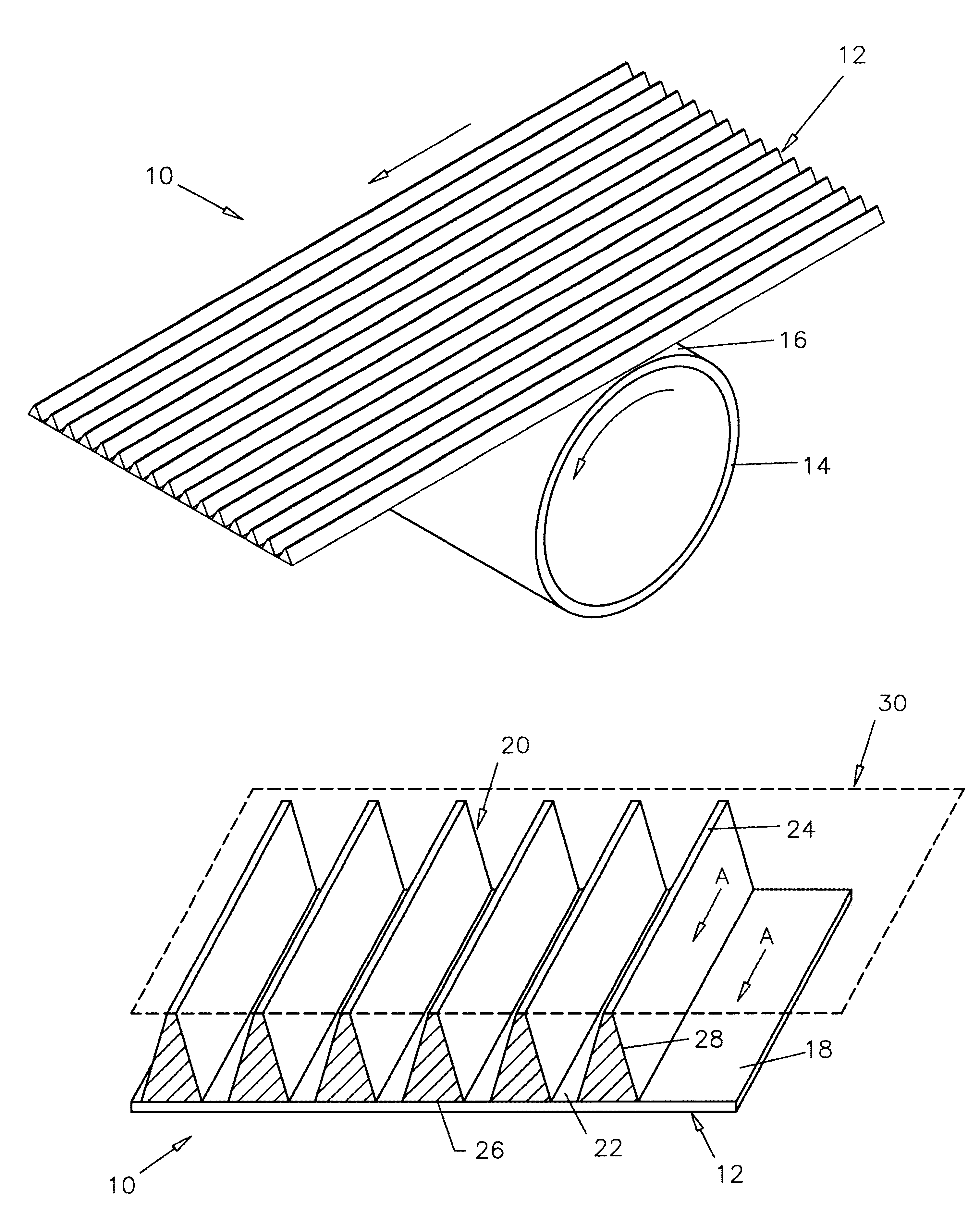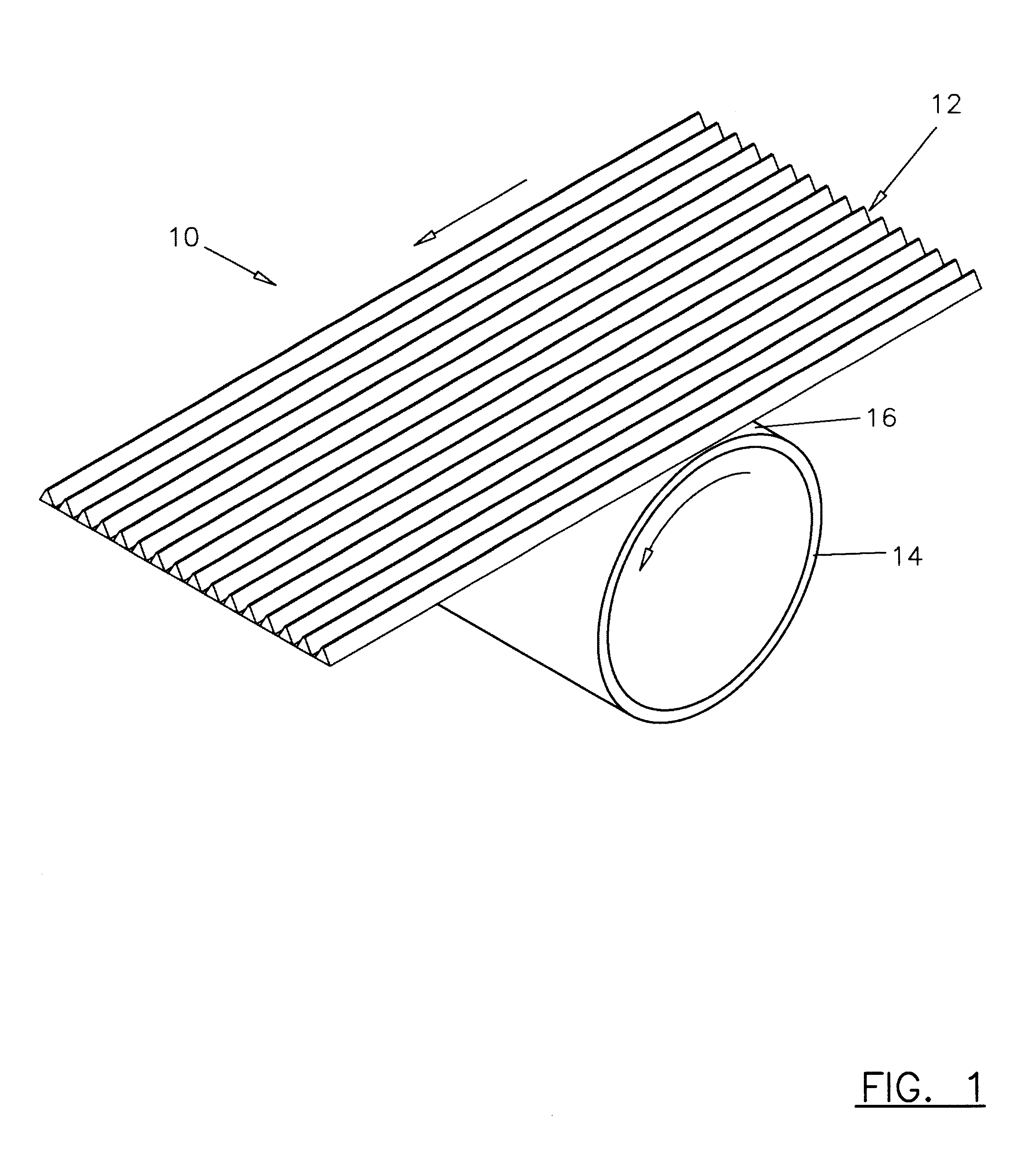Shock absorber cushion for flexographic printing plate and method of use
- Summary
- Abstract
- Description
- Claims
- Application Information
AI Technical Summary
Benefits of technology
Problems solved by technology
Method used
Image
Examples
example
The characteristics in accordance with this invention were tested with displacement projections that were in straight line ranging in widths of 0.001 inches to approximately 0.3 inches. The second characteristic of the pattern used is the spacing between images. The present invention in experiment realized various levels that were successful when the void space was at least equal to the materials' surface image with spaces as great as ten times the image width. In accordance with this example, the most preferable image top width was 0.004 inches while maintaining a space between images of 0.042 inches. This creates an image support that, at its most narrow point, was 0.004 inches in expanding in width from the top of the blanket to the mylar base approximately 0.021 inches.
It is important that regardless of the geometrical cross-sectional shape that the protrusion element run essentially circumferentially, preferably without a break in the circumferential direction around the print ...
PUM
 Login to View More
Login to View More Abstract
Description
Claims
Application Information
 Login to View More
Login to View More - R&D
- Intellectual Property
- Life Sciences
- Materials
- Tech Scout
- Unparalleled Data Quality
- Higher Quality Content
- 60% Fewer Hallucinations
Browse by: Latest US Patents, China's latest patents, Technical Efficacy Thesaurus, Application Domain, Technology Topic, Popular Technical Reports.
© 2025 PatSnap. All rights reserved.Legal|Privacy policy|Modern Slavery Act Transparency Statement|Sitemap|About US| Contact US: help@patsnap.com



